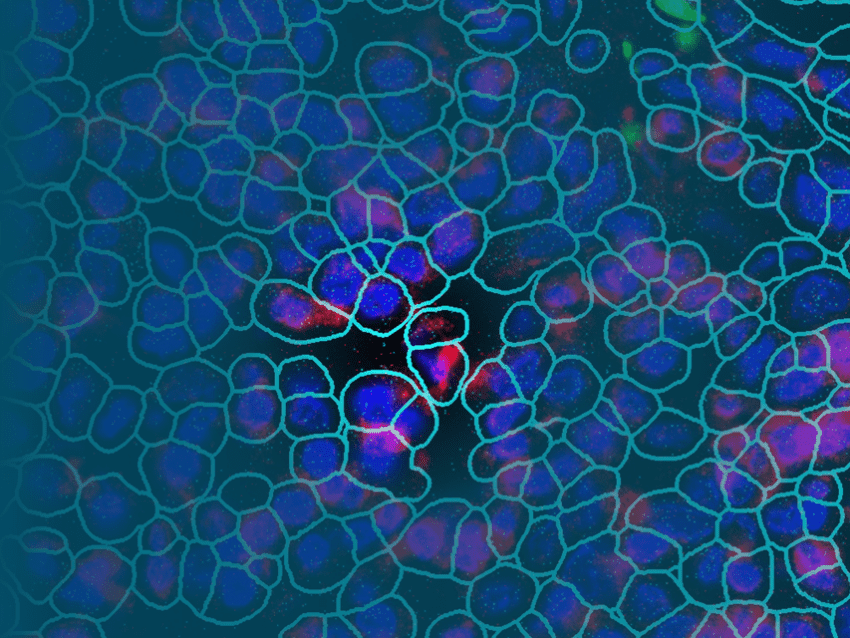
Common questions in molecular biology: Why do we need biomarkers?
What does it mean to be healthy? If you go in for a regular wellness appointment at the doctor’s office, how does the doctor assess if you are healthy? Wellness assessments commonly use biomarkers to answer the question of if we are healthy.
In addition to general assessments of wellness, biomarkers are also clinically useful for making treatment decisions, predicting susceptibility to decisions, and monitoring a person’s response to treatment. Recent work to unveil new molecular biomarkers, using technologies like NanoString’s CosMx™ Spatial Molecular Imager to find biomarkers through single-cell sequencing are expanding our knowledge of cancer biology and could eventually facilitate new diagnostic tools and development of new treatment modalities.
In this Common questions in molecular biology blog post, I explore what biomarkers are and why we need them.
What makes a biomarker, a biomarker?
During a health assessment, there are a variety of sources of data used by a doctor to determine one’s health status. But why is a blood pressure reading a biomarker whereas listening to one’s heart sounds is not? Biomarkers are defined as an observation that is objective, quantifiable, and reproducible that is a direct indicator of one’s overall health status. Although a doctor will note what someone’s heart sounds like, it is not necessarily an objective assessment, nor is a qualitative description quantifiable on its own.
Biomarkers come in many different forms. For example, they include whole body assessments, such as someone’s blood pressure or pulse. They may also include cellular or subcellular analysis. For example, routine blood work often involves performing a comprehensive blood count or CBC. A CBC reveals relative amounts of different cell types in the blood and can reflect a person’s overall health status. Another common blood-based test is to examine hormone levels. For example, the amount of thyroid stimulating hormone (TSH) in a person’s blood is an indicator of how well their thyroid gland is functioning.
Discovering new molecular biomarkers is an area of current research. Molecular biomarkers include examining the presence or absence of certain proteins in our cells or looking at gene expression profiles.
There are also a wide variety of molecular markers. Molecular biomarkers include examining the presence or absence of certain proteins in our cells or looking at gene expression profiles. Discovering and characterizing new molecular biomarkers is an area of current research. Technological advancements such as single-cell sequencing using NanoString’s CosMx SMI are facilitating the examination of cell types in their spatial context. Since spatial location can impact the function of cells (and consequently, interpretation of biomarkers), new research will add layers of complexity to our understanding and use of biomarkers in the clinic.
What information do doctors or scientists glean from biomarkers?
Biomarkers are often characterized by how they are used and consequently the information provided. Doctors and/or research scientists then use these biomarkers in one of six ways.
The first use of biomarkers is for making a diagnosis. These are also called diagnostic biomarkers. There are a wide variety of diagnostic biomarkers. For example, glomerular filtration rate is used for diagnosing chronic kidney disease. Blood sugar levels or hemoglobin A1C (HbA1C) are used for diagnosing people with Type II diabetes.
Clinicians also monitor a condition, disease state, or response to an intervention using biomarkers. A researcher may also use these same monitoring biomarkers to assess response to a treatment.
Predictive and prognostic biomarkers are used to inform treatment decisions. For example, a doctor will use a predictive biomarker to determine how a patient will respond to treatment. With this information in hand, the doctor can choose a treatment strategy that will provide maximal benefit to the patient while minimizing side effects. For example, with increasing ease of genetic testing, many psychiatrists are turning to examination of genetic biomarkers to guide treatment decisions. One such gene used to make treatment decisions is to look for mutations in the Serotonin Transporter (SERT). Certain mutations in SERT prevent binding of a common class of frontline antidepressant/anxiety medications called Selective Serotonin Reuptake Inhibitors (SSRIs). Therefore, people with the SERT mutation will not respond well to SSRIs.
For someone with a disease, a doctor will make a prognosis using prognostic biomarkers. With this information in hand, the doctor and patient can work together to decide how aggressively to treat the disease. For example, for patients newly diagnosed with prostate cancer, the doctor will also examine their blood levels of Prostate Specific Antigen (PSA). PSA levels at the time of diagnosis correspond to the average one- and five-year survival rates of patients.
Risk or susceptibility biomarkers are used to determine the odds of someone developing a certain disease. Unlike a prognostic biomarker, risk biomarkers are used in people without the disease. For example, many common screening panels available through a doctor’s office today look at various genes associated with the development of different kinds of cancer, such as the BReast Cancer (BRCA) genes. Knowing one’s risk for developing cancer can guide lifestyle choices and decisions about pursuing additional cancer screening measures.
The final class of biomarkers are safety biomarkers. Safety biomarkers are used to assess side effects of a new treatment strategy or the impacts of environmental exposure to a toxin on the body. For example, a doctor or researcher may monitor levels of creatinine in the blood to monitor potential kidney damage.
We need biomarkers to guide treatment decisions, monitor response to treatments and disease status, and make informed health decisions.
Biomarkers are objective, reliable, and quantifiable measures that are used to monitor or evaluate someone’s overall health. People, whether it is individuals concerned with their own health, their physicians, or researchers, need biomarkers for a variety of reasons. For example, evaluation of one’s risk biomarkers is useful for making lifestyle decisions. Doctors use diagnostic, predictive, and prognostic biomarkers when making treatment decisions. Monitoring and safety biomarkers are useful for researchers to assess responses to new medicines.
Biomarkers are very useful throughout the clinic, and as such biomarker discovery is a hot area of research. For example, recent technological advances such as CosMx SMI, which facilitates single-cell sequencing, will yield to identification of new biomarkers all within their natural spatial context. With this new knowledge in hand, scientists will be able to identify new biomarkers and improve the practice of medicine.
The CosMx™ SMI and decoder probes are not offered and/or delivered to the Federal Republic of Germany for use in the Federal Republic of Germany for the detection of cellular RNA, messenger RNA, microRNA, ribosomal RNA and any combinations thereof in a method used in fluorescence in situ hybridization for detecting a plurality of analytes in a sample without the consent of the President and Fellows of Harvard College (Harvard Corporation) as owner of the German part of EP 2 794 928 B1. The use for the detection of cellular RNA, messenger RNA, microRNA, ribosomal RNA and any combinations thereof is prohibited without the consent of the President and Fellows of Harvard College (Harvard Corporation).



